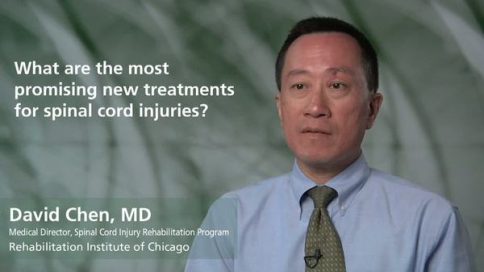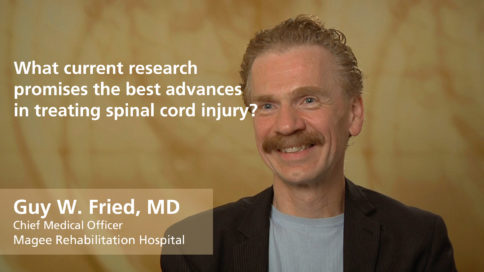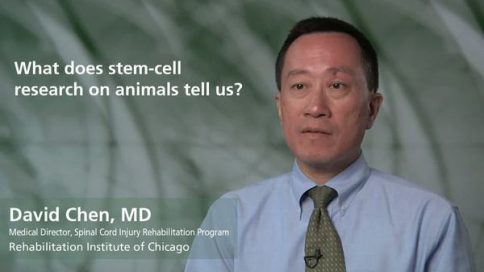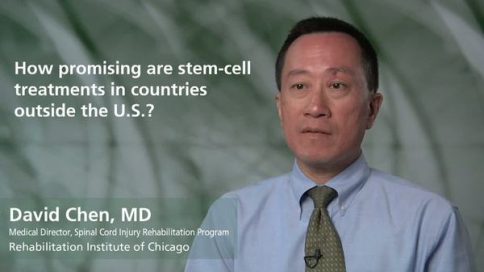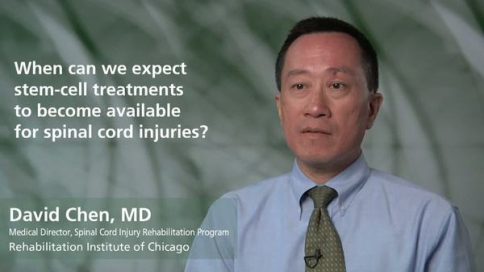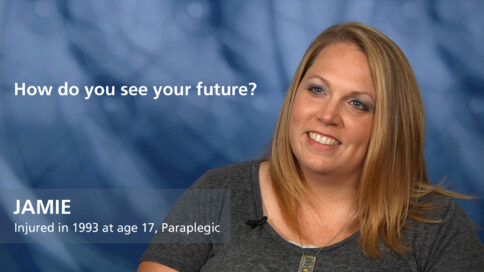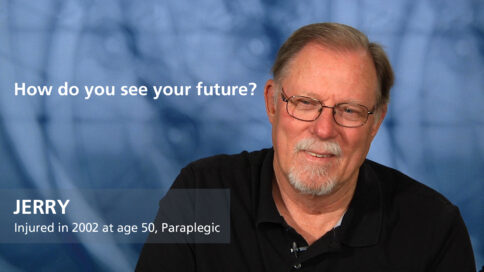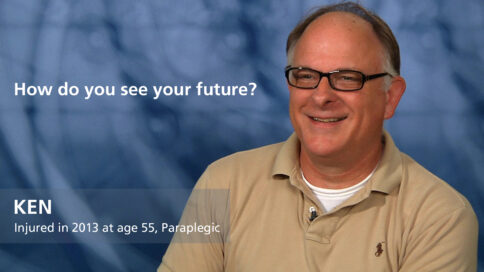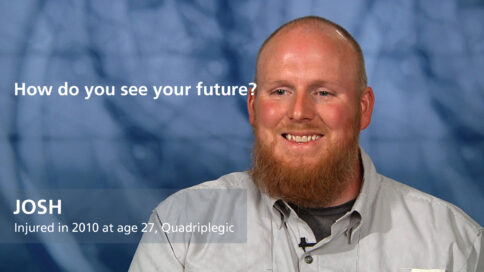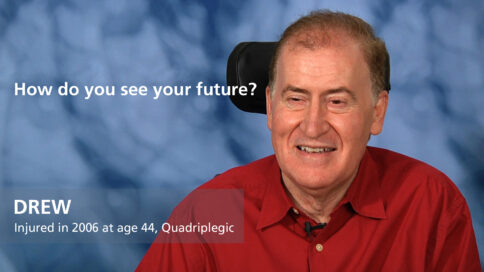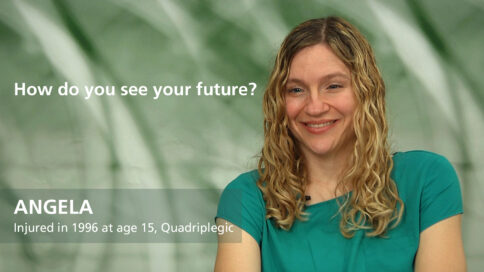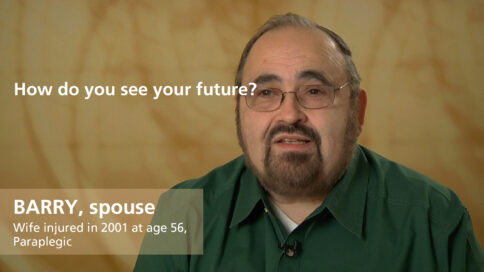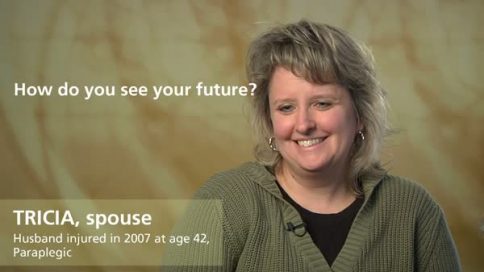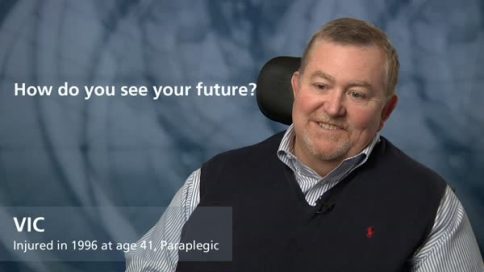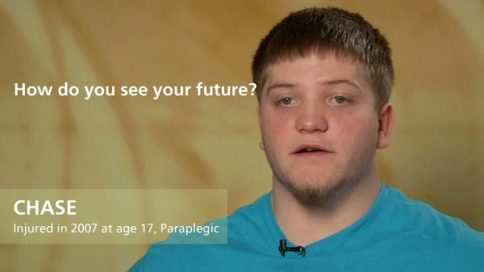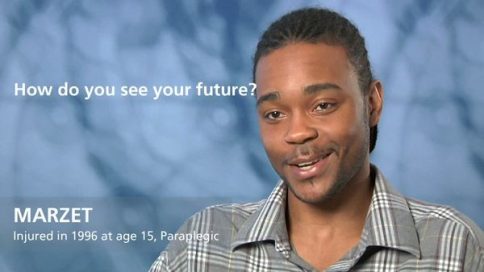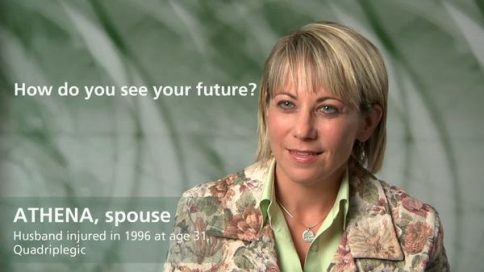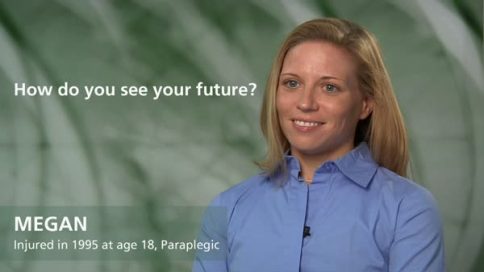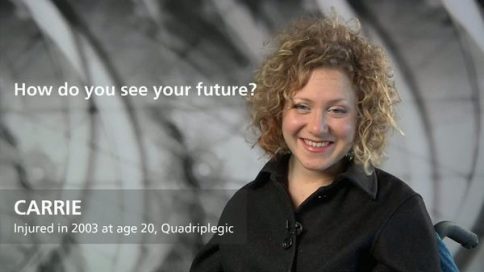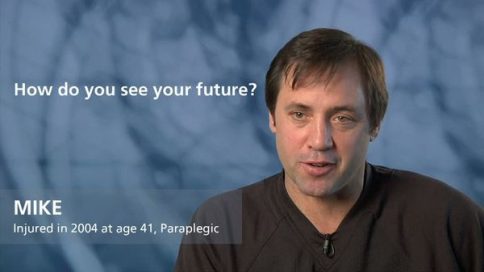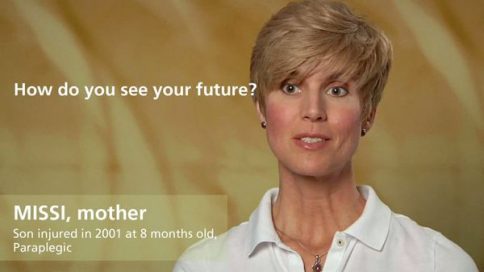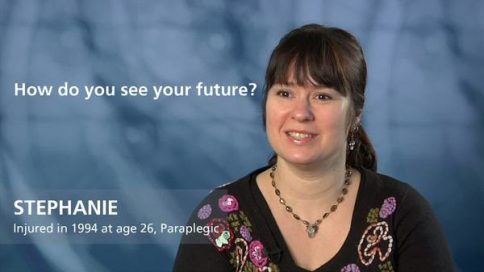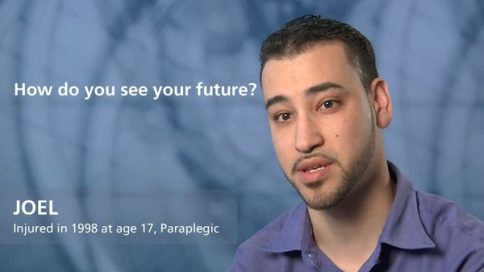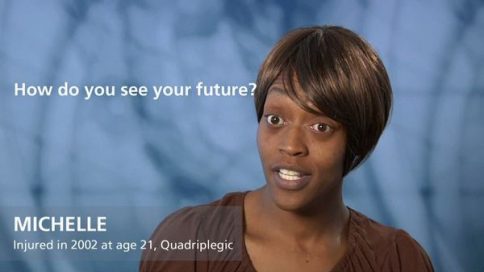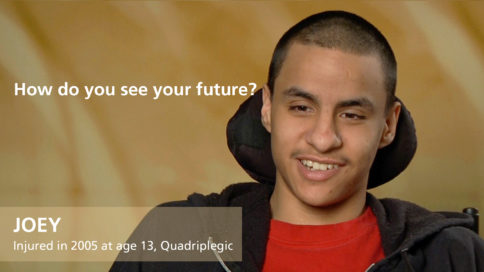How would stem-cell therapies work in the treatment of spinal cord injuries? - David Chen, MD
|
|
How would stem-cell therapies work in the treatment of spinal cord injuries? |
|
David Chen, MDMedical Director, Spinal Cord Injury Rehabilitation Program, Rehabilitation Institute of Chicago |
||
| Read Bio | More Videos by David Chen | |
|
Share |
||
Transcript
The excitement regarding the potential for, of stem cells to treat individuals with spinal cord injuries, comes about from the fact that all the different cells, all the different tissues, parts of our body theoretically originated from a simple cell, what we called a stem cell. And, as the human fetus develops before birth, the cells differentiate into the different cells that then go on to produce tissues of the heart, the lungs, the skin, and also the spinal cord. So, the excitement regarding the potential for stem-cell treatment is—could we take stem cells, these primitive primary cells, and in some manner develop and grow new axons, new nerve cells that perhaps can replace those nerves that have been injured in a spinal cord injury? Unfortunately, it’s not quite as easy as that; the body is obviously very complicated and complex. And, one of the challenges, in terms of the potential for stem-cells is what mechanisms need to be in place to help those stem-cells grow into nerves? And so a lot of the work that’s being done today is focused on just how can we take this primary cell, and turn it into nerve cells that would replace damaged axons and nerves within the spinal cord? The challenge that’s also going to take place after that is, if you can grow new nerves, if you can regenerate new axons, how can you get those nerves and axons then to make the right connections across the area of where the injury took place, to hook onto the right nerves, and make the right connections to restore function. So, while there’s certainly is great promise and excitement about the potential for stem-cells, we still have a great deal to learn about how that can be most used, how it can be best used, and then also what other things need to take place to optimize those cells to do what they hopefully should carry out their function to do.
Show Less|
|
||
add
How would stem-cell therapies work in the treatment of spinal cord injuries? |
||
David Chen, MDMedical Director, Spinal Cord Injury Rehabilitation Program, Rehabilitation Institute of Chicago |
More Videos by David Chen | |
| Transcriptadd | share | |
The excitement regarding the potential for, of stem cells to treat individuals with spinal cord injuries, comes about from the fact that all the different cells, all the different tissues, parts of our body theoretically originated from a simple cell, what we called a stem cell. And, as the human fetus develops before birth, the cells differentiate into the different cells that then go on to produce tissues of the heart, the lungs, the skin, and also the spinal cord. So, the excitement regarding the potential for stem-cell treatment is—could we take stem cells, these primitive primary cells, and in some manner develop and grow new axons, new nerve cells that perhaps can replace those nerves that have been injured in a spinal cord injury? Unfortunately, it’s not quite as easy as that; the body is obviously very complicated and complex. And, one of the challenges, in terms of the potential for stem-cells is what mechanisms need to be in place to help those stem-cells grow into nerves? And so a lot of the work that’s being done today is focused on just how can we take this primary cell, and turn it into nerve cells that would replace damaged axons and nerves within the spinal cord? The challenge that’s also going to take place after that is, if you can grow new nerves, if you can regenerate new axons, how can you get those nerves and axons then to make the right connections across the area of where the injury took place, to hook onto the right nerves, and make the right connections to restore function. So, while there’s certainly is great promise and excitement about the potential for stem-cells, we still have a great deal to learn about how that can be most used, how it can be best used, and then also what other things need to take place to optimize those cells to do what they hopefully should carry out their function to do.

